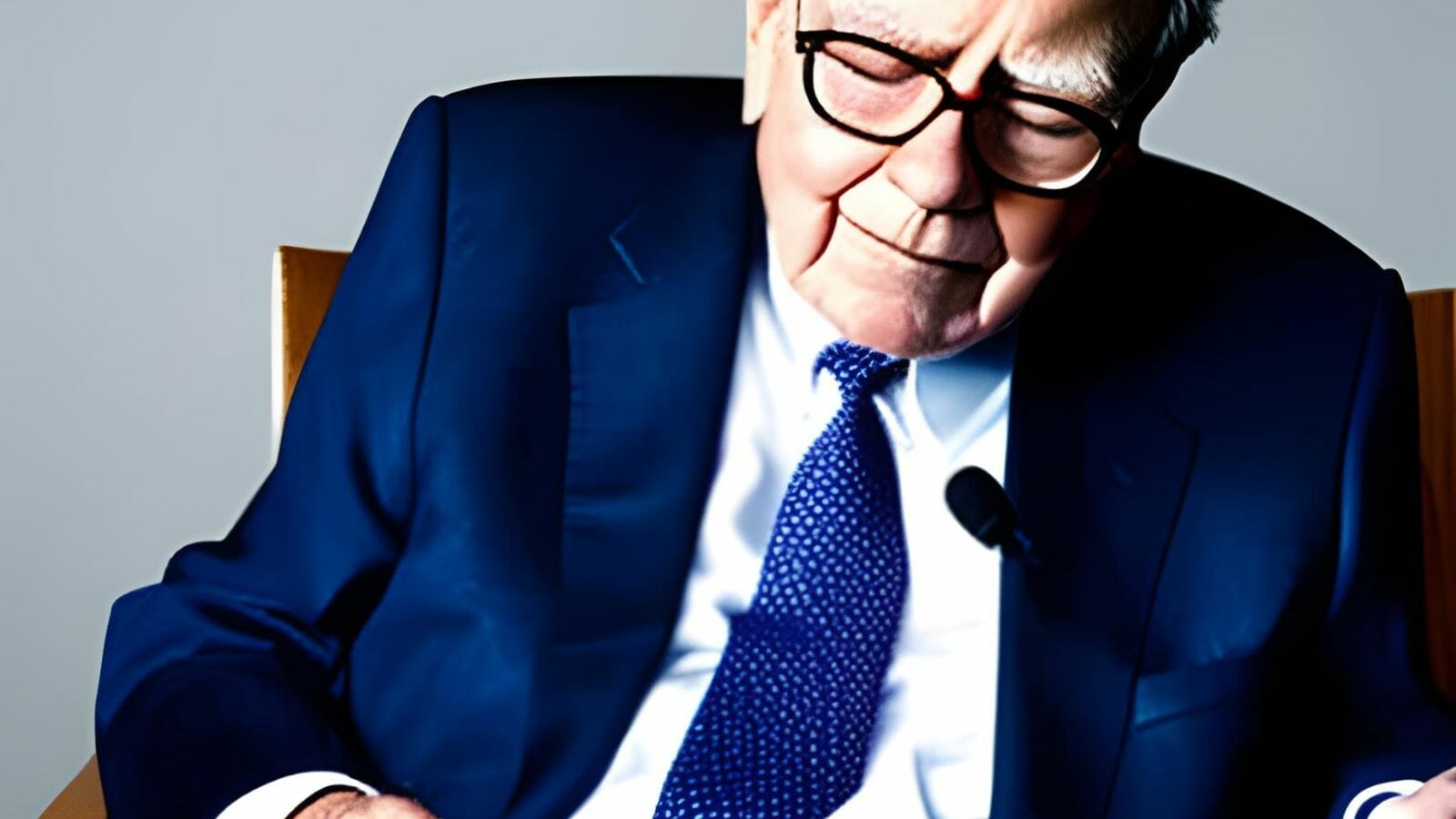Berkshire Hathaway is one of the world’s most renowned and successful companies, and its story is nothing short of legendary.
Founded in 1839 as a textile manufacturer, the company struggled for years until Warren Buffett took over in 1965 and transformed it into a holding company with a portfolio of successful businesses.
Over the decades, Berkshire Hathaway has become synonymous with Buffett’s investing philosophy, emphasizing a long-term focus on quality companies with sustainable competitive advantages or moats.
The company’s holdings span a variety of industries, from insurance and energy to consumer goods and technology. Its investments include major names like Apple, Coca-Cola, and American Express and wholly-owned subsidiaries such as GEICO, BNSF Railway, and Duracell.
Berkshire Hathaway’s success is a testament to Buffett’s investment prowess, leadership style, and the company’s integrity and long-term thinking culture. Its annual shareholder meetings have become major events in the investing world, drawing thousands of attendees and featuring candid Q&A sessions with Buffett and other executives.
In today’s post, we will learn:
- Early Years of Berkshire Hathaway
- Buffett’s Influence on Berkshire Hathaway
- Key Investments and Acquisitions
- Challenges and Setbacks Along the Way
- Berkshire Hathaway Today
- Impact of Berkshire Hathaway
Okay, let’s dive in and dig deeper into the story of Berkshire Hathaway.
Early Years of Berkshire Hathaway
Berkshire Hathaway’s early years were tumultuous. It began with its founding in 1839 as the Valley Falls Company, a textile manufacturer based in Rhode Island.

Over the next century, the company changed hands many times and underwent many:
- Reorganizations
- Mergers
- Acquisitions
By the mid-20th century, it struggled to compete in a changing market and faced mounting financial difficulties.
In 1955, Seabury Stanton acquired Berkshire. Stanton was a successful businessman, chairman, and director of the Northern Textile Association. Stanton sought to revive the struggling textile industry by consolidating smaller companies and creating economies of scale.
Stanton operated the company as a manager, not as a financial expert. He continued to put money back into the company despite the rising prices of cotton.
Yet, Stanton’s efforts to turn around the company were unsuccessful, and by the early 1960s, Berkshire Hathaway was on the brink of bankruptcy.
In 1962, Warren Buffett, a young investment manager from Omaha, Nebraska, began buying company stock shares. Over the next two years, he increased his stake in the company, becoming its largest shareholder.
Despite Berkshire Hathaway’s dire financial situation, Buffett saw potential in its underlying assets, including its textile mills and insurance business.
In 1964, he took control of the company and began implementing his signature investment strategy of acquiring high-quality businesses at attractive prices and holding them for the long term.
While Berkshire Hathaway’s early years saw uncertainty and financial struggles, they set the stage for Warren Buffett’s transformative leadership and the company’s later success.
Buffett’s Influence on Berkshire Hathaway
Warren Buffett’s influence on Berkshire Hathaway was immediate and far-reaching. When he took control of the company in 1965, he began implementing major changes to its business model and strategy, transforming it from a struggling textile business into a diversified holding company.

One of the first changes Buffett made was to focus the company’s resources on its insurance business, which he saw as a reliable source of long-term profits.
He believed that the insurance industry was different from other businesses. He felt the insurance businesses could take advantage of the timing of cash paid out and taken in. For example, insurance policies include consumers paying in money, and the insurance company holds the money until paying out a claim. But they can invest those funds between taking in the money and paying it out. Also known as Buffett’s famous insurance “float.”
He invested in insurance companies, including the National Indemnity Company and GEICO, to capitalize on this advantage.
These would become major components of Berkshire Hathaway’s portfolio in future years.
Buffett also introduced a new investment philosophy at Berkshire Hathaway, emphasizing a long-term focus on quality companies with sustainable competitive advantages or moats.
He sought companies with strong brand recognition, loyal customers, and stable earnings and was willing to pay a premium for them. Think of Coca-Cola, American Express, and Duracell, to name a few.
This approach was a departure from the overall investment strategies of the time, which emphasized short-term gains and speculation.
Under Buffett’s leadership, Berkshire Hathaway expanded into other industries and sectors beyond insurance and textiles. He acquired several companies in industries as diverse as retail, manufacturing, and energy, including iconic brands like See’s Candies and Fruit of the Loom.
Buffett made these investments with a long-term view and was willing to invest heavily to help them grow and succeed.
Buffett didn’t limit his influence on Berkshire Hathaway to its business model and strategy. He also introduced a new culture of integrity and transparency that became synonymous with the company’s brand.
He believed the best way to build trust with shareholders was to be candid about the company’s successes and failures. He communicated with them through annual shareholder meetings and letters.
This culture of openness and honesty helped cement Berkshire Hathaway’s reputation as one of the world’s most respected and successful companies.
Key Investments and Acquisitions
Warren Buffett is known for his long-term investment strategy, which has helped the company become one of the world’s largest and most successful conglomerates.

Let’s look at some of the more significant investments and acquisitions.
Over the years, Buffett has made several notable investments and acquisitions that have played a critical role in the growth and success of Berkshire Hathaway.
One of Buffett’s most famous investments was in Coca-Cola. In 1988, he purchased $1 billion worth of Coca-Cola shares, representing about 7% of the company. He recognized that Coca-Cola had a strong brand and a global reach, making it an attractive investment opportunity.
Over the years, the value of Berkshire’s investment in Coca-Cola has grown significantly, and the company has become one of Berkshire’s largest holdings.
Another notable investment was in American Express. Buffett purchased shares in American Express in 1964 when the company was struggling due to the collapse of the Salad Oil Scandal.
Buffett recognized that American Express had a strong brand and a loyal customer base and saw an opportunity to invest significantly at a discounted price.
This investment helped to solidify Berkshire Hathaway’s reputation as a savvy investor.
In recent years, Berkshire Hathaway has also made significant investments in the technology sector. One of the most notable investments was in Apple.
In 2016, Berkshire Hathaway purchased a stake in Apple worth around $1 billion. Buffett recognized the importance of Apple’s brand and its strong position in the smartphone market. The investment has paid off handsomely for Berkshire Hathaway, with its stake in Apple growing to over $137 billion since 2016.
Buffett’s significant acquisitions have also played a crucial role in the growth of Berkshire Hathaway.
In 1995, Berkshire Hathaway acquired GEICO, the second-largest auto insurer in the United States. GEICO’s low-cost business model and strong brand made it an attractive acquisition for Buffett. Over time, GEICO has significantly contributed to Berkshire’s bottom line, providing a stable source of insurance premiums or float, which Buffett has used to continue growing Berkshire.
In 1972, Berkshire Hathaway made a $25 million acquisition of See’s Candies, a California-based candy manufacturer.
The acquisition was unusual for Berkshire, as the company focused on investments, not acquisitions, at the time. However, Buffett recognized the value of See’s Candies’ brand and its loyal customer base and saw an opportunity to invest in a successful company.
The See’s Candies investment was a watershed moment for him and Charlie Munger. It helped crystalize their investment ideas and philosophy and move beyond buying “cheap” and focusing on the quality and long-term impact of moats and pricing power.
Over time, See’s Candies has become a profitable business for Berkshire Hathaway, generating strong returns on investment.
In 2010, Berkshire Hathaway made its largest acquisition to date, purchasing Burlington Northern Santa Fe (BNSF), one of the largest railroad companies in the United States.
The acquisition was a bet on the long-term potential of the US economy and the importance of rail transportation. BNSF has become a crucial part of Berkshire’s business, generating significant revenue and providing a competitive advantage in the transportation sector.
In addition to these notable investments and acquisitions, Buffett has also made several smaller investments in companies that have become successful. These include investments in companies such as Bank of America, Visa, and Moody’s.
Buffett’s investment strategy at Berkshire Hathaway has focused on investing in companies with strong brands, great management, and long-term growth potential.
His investments in Coca-Cola and American Express, as well as his acquisitions of GEICO, BNSF, and See’s Candies, have played a crucial role in the growth and success of Berkshire Hathaway.
Challenges and Setbacks Along the Way
It hasn’t been sunshine and roses all the time at Berkshire; like any company, they have experienced challenges and setbacks along the way.

One of the earliest and most significant challenges faced by the company was the decline of its textile business.
In the 1960s, the textile industry in the US began to suffer due to competition from cheaper imports, and Berkshire Hathaway’s textile mills were no exception. The company struggled to keep the business profitable and eventually shut it down in 1985.
The decision was difficult for Buffett, as he had a personal attachment to the mills and had previously stated that he would keep them running “forever.”
Another challenge faced by Berkshire Hathaway was the involvement of some of its subsidiaries in scandals.
One such example was the 2011 scandal involving the subsidiary Lubrizol. People learned that David Sokol, a high-ranking executive at Berkshire Hathaway, had purchased shares in Lubrizol before recommending that Berkshire Hathaway acquired the company.
Many saw Sokol’s actions as a conflict of interest, and he resigned shortly after.
The incident led to questions about the company’s corporate governance and transparency.
Another subsidiary that caused trouble for Berkshire Hathaway was NetJets, which provides fractional ownership of private jets.
In 2009, the company’s pilots sued over allegations of poor working conditions and labor violations. They settled the lawsuit for an undisclosed amount, but it tarnished the reputation of Berkshire Hathaway and raised questions about the treatment of workers at its subsidiaries.
Despite these challenges, Berkshire Hathaway has managed to overcome them and remain a successful company.
The decline of the textile business was a difficult but necessary decision, as the company could focus its resources on more profitable ventures such as investments and acquisitions.
Buffett addressed the scandals involving subsidiaries that emphasized the importance of ethics and transparency in the company’s operations.
Buffett once said, “Lose money for the firm, and I will be understanding. Lose a shred of reputation for the firm, and I will be ruthless.”
Berkshire Hathaway Today
One of the most notable aspects of Berkshire Hathaway today is its leadership succession plan.
Buffett, who has led the company since 1965, is now in his nineties and has gradually stepped back from his role recently. In 2021, he announced that he would be stepping down as CEO, and Greg Able, who currently heads up the company’s non-insurance operations, will take his place. Talk about big shoes to fill.
Despite the impending leadership change, Berkshire Hathaway’s future outlook remains strong. The company has a solid financial position and continues to make strategic investments and acquisitions.
In recent years, the company has focused on expanding its presence in the technology sector with investments in companies such as Apple and Amazon.

The new investment team, Todd Combs and Ted Weschler, were hired over a decade ago to take over some investing responsibilities. They have led some of the changes in the investment portfolio, like investing in Amazon, Apple, and Taiwan Semiconductor, for example.
This move towards tech investments reflects the changing nature of the business landscape and demonstrates Berkshire Hathaway’s willingness to adapt and evolve with the times.
In addition to its investments, Berkshire Hathaway’s insurance portfolio remains a major source of revenue for the company. The company’s subsidiaries, such as GEICO and General Re, remain leaders in their respective markets and contribute significantly to its overall success.
In conclusion, Berkshire Hathaway remains a dominant force in the business world today. Its diverse operations, solid financial position, and strategic investments make it a well-positioned company for continued success.
With a clear leadership succession plan in place and a willingness to adapt to changing market conditions, the company’s future looks bright.
Impact of Berkshire Hathaway
Berkshire Hathaway’s impact on the business world and investment landscape is significant and far-reaching.
The company’s success and reputation as a smart investor have influenced many other companies and investors, both large and small.
One of the main ways Berkshire Hathaway has impacted the business world is by demonstrating the importance of long-term thinking and strategic investments.
Buffett’s philosophy of buying and holding quality companies for the long term has inspired many investors to take a similar approach rather than trying to make quick profits through short-term trading.
Another way that Berkshire Hathaway has had an impact is through its focus on strong management and corporate governance.
The company’s subsidiaries are known for being well-managed and well-run, and this emphasis on quality management has set a standard for other companies to follow. Berkshire’s hands-off approach to its subsidiaries helps highlight the approach of finding strong management to run the investments.
We can see Berkshire Hathaway’s influence on other companies in its investments and acquisitions.
When Buffett makes a major investment or acquisition, it can signal to other investors and companies that a particular industry or company is worth paying attention to. For example, when Berkshire Hathaway invested in Apple, it helped to legitimize the tech giant as a stable and profitable investment opportunity.
In addition to its impact on the business world, Berkshire Hathaway has also had a significant impact on individual investors.
The company’s annual shareholder meetings have become legendary, with thousands of investors flocking to Omaha each year to hear from Warren Buffett and learn from his investing insights. Buffett’s annual letters to shareholders are also eagerly awaited by many investors, who see them as a valuable source of investing wisdom and insight.
Overall, we cannot overstate the impact of Berkshire Hathaway on the business world and investment landscape. Its focus on long-term thinking, quality management, and strategic investments has set a standard for others. Its influence is likely to continue for many years to come.
Investor Takeaway
Berkshire Hathaway has a rich and storied history spanning over half a century. From its humble beginnings as a struggling textile manufacturer, the company has evolved into a diversified conglomerate with holdings in various industries and sectors.
We could characterize Berkshire Hathaway’s history based on Buffett and the team’s smart investments and wise business decisions.
Key takeaways from the history of Berkshire Hathaway include the importance of investing for the long term, the value of quality management, and the power of strategic acquisitions. The company’s success has also demonstrated the importance of staying true to one’s values and principles, even in the face of setbacks and challenges.
And with that, we will wrap up our story of Berkshire Hathaway.
Thank you for reading, and I hope you find something of value. If I can further assist, please don’t hesitate to reach out.
Until next time, take care and be safe out there,
Dave
Related posts:
- What the Berkshire Hathaway Owner’s Manual Says About Buffett’s Approach Ever wonder what blueprint Warren Buffett uses? Or how he manages his company or decides what companies to invest in or buy outright? Well, we...
- Warren Buffett’s Dream Investment: See’s Candies Warren Buffett has bought some great businesses in his career, including Coca-Cola, American Express, and Apple. But his dream business is See’s Candies, the chocolatier...
- The 7 Ground Rules for Warren Buffett’s Partnership that Led to 24.5%+ Gains At a young age of just 25 years old, Warren Buffett had a keen vision on how he would run his partnership and achieve superior...
- Stock Buying Checklist: Essential Part of Evaluating Stocks (Example Checklist) The stock buying checklist is one of the essential tools to any investor, in my opinion, and to most, an underutilized tool. Using a checklist...
